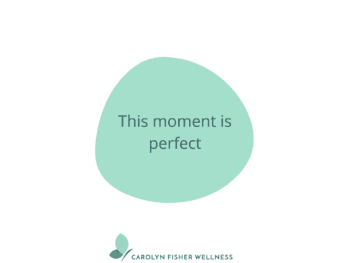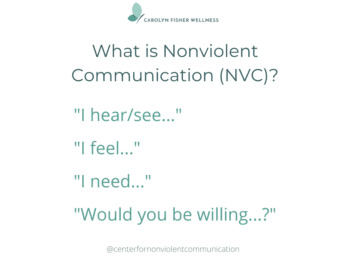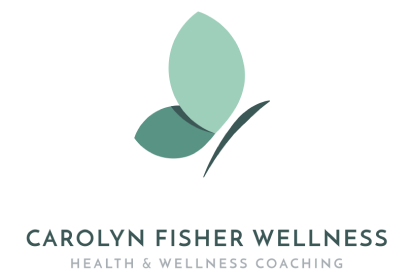If you’ve been focused on the wellness world you know that “mindfulness” has been trending big time, especially since the second half of the last decade. But mindfulness is not just a buzz word and it’s definitely not a fad.
Eastern cultures have been practicing mindfulness for millennia but in the West, we’re relative newbies to the idea that our state of mind and mental/emotional health is equally important to thriving as how well the physical body is functioning.
What has Western Civilization been missing out on exactly? What’s in it for me? If these questions resonate with you, I hope today’s topic helps you sort out your answers.
In this post, I’ll cover…
- What mindfulness looks like.
- How we can build our mindfulness skills.
- How we can use mindfulness to change our habits.
What Mindfulness Means
Sometimes buzz words are just that: words. Just in case you haven’t quite nailed down what mindfulness is here are a few definitions mashed together.
When we’re mindful we’re fully immersed in the present moment…we’re not thinking about what happened before or what might happen next. No ruminating, no planning. In these moments, our focus narrows and at the same time expands, creating room for whatever the moment has in store.

When we’re mindful we can…
- Notice, name, and normalize our emotions.
- Accept life as it is.
- Accept our and others’ imperfections.
- Find contentment with where we are.
- Connect our mind and body and feel more present.
Finding this place of awareness and acceptance isn’t easy however mindfulness is available to all of us and can be learned with practice.
How to Cultivate Mindfulness
First, Awareness
I started practicing mindfulness before I started to meditate. So the number one takeaway here is that you don’t need to start a meditation practice to experience the benefits of mindfulness.
About ten years ago, as I looked for answers to the existential questions that often come with middle age, I learned that the foundation of Buddhist thought is that attachment to outcome leads to all human suffering.
I had an a-ha moment…I was “enlightened” to another way of doing life.
I decided immediately to let go of the limiting idea that choosing one path for my life’s journey leading to one set of predetermined outcomes was the only possible version of “success.”
Finding success (whatever that looks like to you) means being open to possibilities and to do that we need to keep our minds open and alert to those opportunities.
This mindset has helped me keep going after a few gut punches and faceplants in my 40s. I can honestly say that some of my greatest growth opportunities have come from events that would have likely derailed me before I had my epiphany around attachment.
But without a profound realization as I was lucky enough to experience at the right time and place in my life, old habits are hard-wired in our brain, and how we think, about ourselves and the “rules” of life, is a habit. The good news is that we can change our habits through deliberate intentions and actions.
My first experience with practicing mindfulness was the weather.
I decided to notice the weather and not form an opinion about it. Whether it was hot, warm, or cold outside the weather wasn’t good, bad, or “just right.” The temperature was simply information that helped me decide what to wear and how to plan my day.
This approach didn’t mean I couldn’t savor a warm spring day; it meant that those same moments of gratitude and joy were possible on stormy and sweltering days that I once judged as unpleasant and limiting.
Then, practice, practice, practice
Mindfulness comes and goes. As we continue to practice mindfulness we are more easily able to access it in our everyday lives, which is the whole point!
Noticing the weather without judgment is only one way to experiment with mindfulness.
- Taking a moment to define how you’re feeling is another way to be mindful. (Aim to choose a “real“ feeling. You can do this by finishing the sentence with one word: “I feel [fill in the blank.]”
- In difficult moments, pausing to take a slow, deep belly breath can center and prepare you to react constructively.
- Or focus on an object (your hand, a pen, etc.) and one at a time notice all of its features: shape, color, smell, texture, etc.
- You can close your eyes and notice all of the sounds around you, focusing on them individually for a while, then moving on to the next one.
- Prayer or writing in a journal are mindfulness exercises.
- Participating in a hobby you love like making art or music, sewing, gardening, and even cooking requires mindfulness.
Starting a Seated Meditation Practice
If mindfulness is new to you, adding the structure of seated meditation is something you might try to help you become more proficient in this valuable life skill.
I (finally!) started meditating regularly last year during the pandemic and am now “sitting” almost every day for at least ten minutes.
A few things I love about meditating:
- It’s relaxing. Taking slow, rhythmic breaths calms the nervous system. The heart rate slows, blood pressure drops, and stress and “happy” hormones become more balanced.
- It’s energizing. After a good “sit” I’ll open my eyes and the world seems bright and full of possibility. I feel hopeful and creative.
- It’s self-love. Slowing down to focus entirely on our well-being is an act of self-love.
- It’s brave. A willingness to meet ourselves in the moment with nothing but our emotions and thoughts (as they come and go) takes courage and has made me feel more confident and capable.
Netflix has partnered with Headspace to create a meditation series for beginners so this could be a great resource to get started if you want to give meditation a try. (Another series on sleep is coming later in 2021.)
You may already be well aware that it can be challenging to get the hang of meditation for a number of reasons.
On and off for years I would try to meditate and quit immediately because all I could think about was the discomfort in my neck. I now use the back of my sofa to support my back so I can relax my neck, a trick I learned from my Zoom meditation teacher and Tamara Levitt of Calm. I loooove her daily guided 10-minute meditations with a short lesson at the end of each one.
If you decide to give meditation a try, I encourage you to keep trying even if it doesn’t seem to be “working.” You can experiment until you figure out what works.
- Experiment with different times of the day or locations
- Try different postures (e.g., use a cushion, chair, or lie on your back, feet on the floor)
- Try burning a candle or incense or use a timer
Also, keep in mind that even short periods of meditation make a difference…and we all have to start somewhere.
Setting realistic, behavioral goals to gradually build your practice could be very helpful here! Aim for frequency over duration. In other words, three days a week of 5 minutes of meditation will help you build a regular practice more than 15 minutes once a week will.
Using Mindfulness to Change Our Habits
Now, onto how mindfulness can help us achieve wellness using the holistic Lifestyle Medicine framework. My coaching clients set goals around mastering habits in these areas.
Set your mind
Note: Mindset is not an official component of Lifestyle Medicine, however, how we think is critical to behavior change.
Have you ever heard this phrase?: “Check yourself before you wreck yourself.”
This modern version of “Think before you act,” reminds us to use mindfulness to stay on track.
Mindfulness helps us make good decisions that support our health. When we pause to ask, “Does this behavior help me or hurt me?” we can start to make different choices and form new pathways in our brain to build healthy habits.
When we invite mindfulness to situations that challenge our resolve we can take a deep breath, offer ourselves an affirmation or mantra (e.g., “You got this, girl!”) or run through an “if/then” scenario (e.g., “When I see donuts in the break room I will walk away,“) we’ve designed to deploy in those moments.
Eat health-promoting foods
Tip: Staying mindful helps us use curiosity to ensure we are nourishing our bodies in ways that support optimal health. A few questions that might be good to ask yourself:
- How do I feel when I eat this?
- Am I hungry?
- If I’m not hungry why am I seeking food?
Your answers can lead you to form healthy habits around food and optimize your diet.
Tip: Eating mindfully can also help us savor our meal and the company of our companions.
Tip: Slow, mindful eating gives the stretch receptors in our intestines time to signal our brain that we are satisfied before we overeat.
In other words, when we eat quickly we are often full before we feel satisfied, which means we are likely to continue to eat until we’re satisfied, thus overeat. (Fullness and satiation are different sensations.) To maintain a healthy weight, it’s important to eat slowly, especially when consuming calorie-dense foods.
Move more
Mindfulness helps us do hard things. If you’ve been mostly sedentary for some time, starting to move more, especially intentional exercise, can feel hard.
Tip: If the sofa calls your name as you prepare to work in the garden or go for a walk, using mindfulness to check in can help motivate you to make the choice that aligns with the vision of the healthy and happy person you want to be.
If you decide to get comfy on the sofa that’s okay, too. Just thinking about moving is a form of visualization moving you toward action, and your next attempt can have a different outcome. Remember to use mindfulness to notice and accept any emotions you’re feeling around your choice to rest and show self-compassion.
Tip: We can also use mindfulness during intentional exercise to stay in the present moment, accept our emotions and imperfections, and find peace with the moment so we can push through discomfort and do the hard work. (That’s why it’s called working out!)
Get restful sleep
Sleep isn’t a luxury. We can use mindfulness to ask, “Should I skip sleep to do one more household chore or watch one more episode instead of going to bed?”
Tip: Adding even just a few minutes of seated meditation or deep breathing to your bedtime routine can help leave the day behind and provide a gateway to sleep.
Tip: If you wake up in the middle of the night feeling anxious or just have a lot on your mind, try breathing deeply and focusing on each inhale and exhale to calm your body and mind.
Manage stress
Tip: Meditation is a proven strategy for stress reduction. You can keep it simple and just close your eyes and focus on your breathing.
Taking a few deep breaths (five or more would be great) can be grounding and bring more focus and clarity to the task of sorting out a difficult situation, whatever it might be. (If you’re driving or in a meeting just breathe.)
Tip: Rather than saying, “I’m stressed,” use mindfulness to more precisely identify what emotion you’re feeling. Are you angry…frustrated…overwhelmed, etc.? When you’ve identified the emotion, translate that into which of your needs isn’t being met.
- If you’re angry perhaps your need for fairness isn’t being met.
- If you’re frustrated maybe your need for communication isn’t being met.
- If you’re overwhelmed you may not be getting the support you need.
Once you know what you need you can figure out how to get it.
By the way, this is a trick I learned from the wonderful Susan David. Her pop-up podcast early in the pandemic is a crash course in resilience. I highly recommend it!)
Meaningful connection
Tip: Nonviolent Communication (NVC) is an authentic way to ask for what you need without the collateral damage of a strained relationship.
NVC helps us focus on getting the conversation (and outcomes) right, not on being right (as Brené Brown says). This is worth the effort (NVC is definitely a “hard thing”) and simply isn’t possible without mindfulness.

Tip: Practicing mindfulness can deepen our relationships. When we can be in the moment without distractions we are more available to connect with our authentic selves and show empathy, kindness, and love.
Moderate drinking/quit smoking
The tip here is to use the “Set your mind” strategy I started this section on changing our habits with.
While drinking alcohol can help us relax and fall asleep, in reality, drinking too close to bedtime interferes with quality sleep. (It’s best to stop drinking at least four hours before bed.) Staying mindful of this can help us moderate our drinking. If this is something you’d like to work on committing to behavioral goals can help.
Also staying mindful of the reality that “bingeing” or “heavy” use of alcohol increases our risk of dementia and certain cancers and chronic diseases is a powerful “why” that can help us change our habits around alcohol. Note: For women, the CDC definitions of binge drinking is three or more drinks a day. Heavy use is considered more than seven drinks per week.
Abstaining from smoking is a very hard thing. Emerging research finds that mindfulness can help more smokers become and stay nonsmokers.
Don’t Forget to Breathe
That’s it, friends! If you take one thing away from this post I hope it’s to remember to take a deep breath and let it go in moments that feel overwhelming. As you breathe in and out remind yourself that like that very breath everything is temporary.
Please let me know in the comments below what you liked best about this post! Also, I’d love it if you’d share it with your friends who might find this information helpful.


 Top 2 Reasons Why Plants are Superfoods
Top 2 Reasons Why Plants are Superfoods
Mindfulness is such a POWERFUL tool! Thank you for so much great information ?